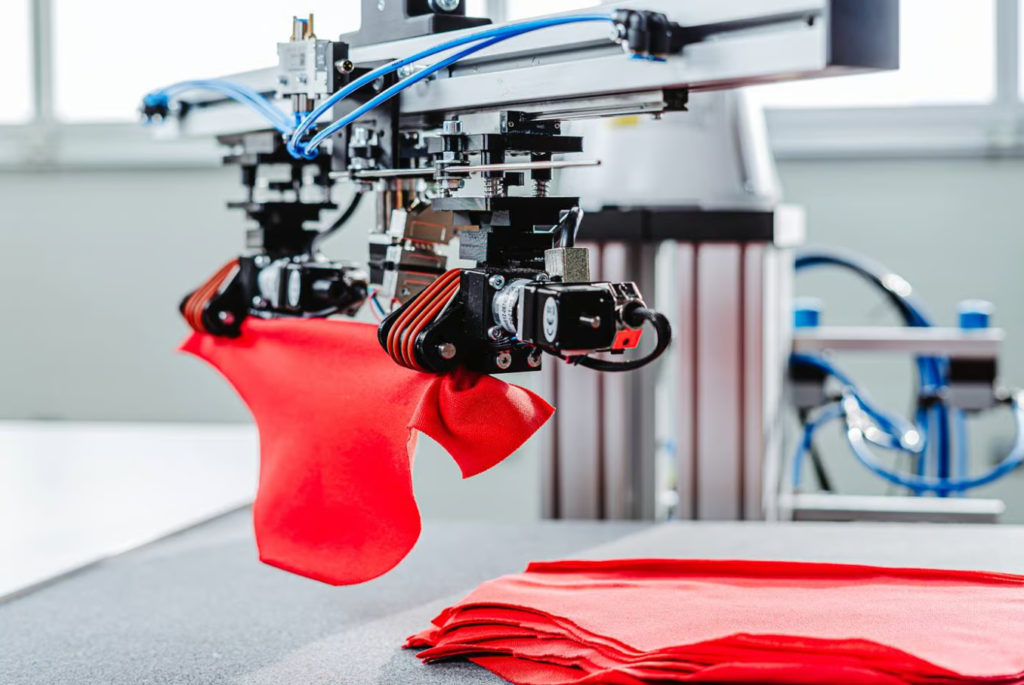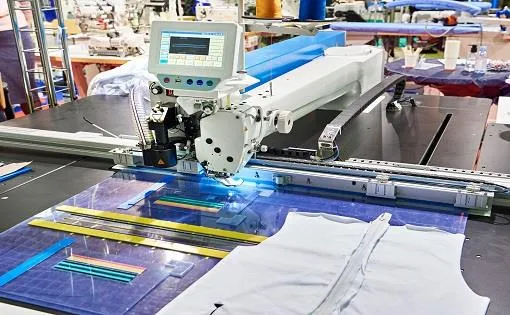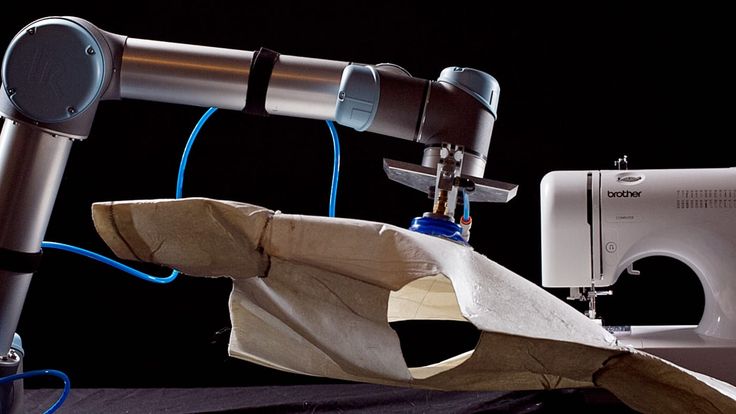The textile industry, traditionally known for its labor-intensive processes, is undergoing a technological revolution. Robotics, once confined to high-tech manufacturing sectors, is now making significant inroads into textile production. This transformation marks a new era where automation, precision, and efficiency redefine how textiles are manufactured. The integration of robotics in textile manufacturing is not only boosting productivity but also setting new standards for quality and innovation in the industry.

The Evolution of Robotics in Textile Manufacturing
The adoption of robotics in textile manufacturing is part of a broader trend towards Industry 4.0, where automation and data exchange are central. Robotics, powered by advanced algorithms and machine learning, is enabling textile manufacturers to automate complex tasks, reduce human error, and increase production speed.
1. Automated Cutting and Sewing

One of the most significant advancements in textile robotics is automated cutting and sewing. Traditional cutting and sewing require skilled labor and are time-consuming. However, robotic systems equipped with laser-guided cutting tools and high-precision sewing machines can perform these tasks faster and with greater accuracy. These systems can handle intricate designs and patterns that would be challenging for human workers, ensuring consistency and quality across large production runs.
2. Fabric Handling and Sorting
Handling and sorting fabrics is another area where robotics is making a difference. Robots equipped with advanced sensors and gripping mechanisms can handle delicate fabrics without causing damage. These systems can sort and organize materials based on type, color, and texture, streamlining the production process and reducing the likelihood of errors.
3. Inspection and Quality Control
Robots are also transforming quality control in textile manufacturing. Automated inspection systems can detect defects in fabrics at a much higher accuracy than human inspectors. These systems use machine vision technology to identify even the smallest flaws, ensuring that only the highest quality products reach the market. This level of precision is crucial in maintaining brand reputation and customer satisfaction.
The Impact of Robotics on Textile Production
The integration of robotics into textile manufacturing is having a profound impact on the industry. Here are some of the key benefits:
1. Increased Productivity
Robotic systems can operate 24/7 without fatigue, significantly increasing production capacity. This continuous operation allows manufacturers to meet growing demand without compromising on quality. Moreover, the speed and precision of robotic systems reduce production times, enabling faster turnaround and delivery to market.
2. Cost Efficiency
While the initial investment in robotic systems can be substantial, the long-term cost savings are significant. By automating repetitive and labor-intensive tasks, manufacturers can reduce labor costs and minimize waste. Additionally, the enhanced accuracy of robots reduces material wastage and rework, further contributing to cost efficiency.
3. Enhanced Customization
Robotics in textile manufacturing also opens up new possibilities for customization. Advanced robotic systems can be programmed to produce small batches of customized products with minimal setup time. This flexibility is particularly valuable in the fashion industry, where consumer demand for personalized products is on the rise.
For more insights into how technology is revolutionizing fashion, read our blog on The Future of Fashion: 3D Printing and Textiles.
The Future of Robotics in Textiles

As robotics technology continues to evolve, its applications in textile manufacturing are expected to expand further. Future advancements may include more sophisticated robots capable of handling even more complex tasks, such as fabric weaving or knitting. Additionally, the integration of artificial intelligence (AI) with robotics will enable even greater levels of automation and predictive maintenance, reducing downtime and enhancing efficiency.
The development of nano-textiles is another area where robotics will play a crucial role. Robots equipped with nano-manipulation capabilities can create fabrics with advanced properties, such as enhanced strength, water resistance, or temperature regulation. To learn more about the potential of nano-textiles, explore our blog on Nano-textiles: Exploring the Benefits and Applications.
Challenges and Considerations
While the benefits of robotics in textile manufacturing are clear, there are challenges that need to be addressed. The high cost of robotic systems and the need for skilled technicians to operate and maintain these systems can be barriers to adoption, particularly for smaller manufacturers. However, as technology advances and costs decrease, these barriers are likely to diminish.
Moreover, textile firms can leverage AI not just for robotics but also for other applications like color prediction and trend analysis. By integrating AI into their operations, textile manufacturers can stay ahead of market trends and deliver products that meet consumer demands. For more information on this topic, check out our blog on How Textile Firms Can Leverage AI for Color Prediction and Trends Analysis.
Conclusion: Embracing the Robotic Revolution
Robotics in textile manufacturing represents a new era of production, where automation and innovation are driving the industry forward. The benefits of robotics, from increased productivity to enhanced customization, are transforming how textiles are made. As the technology continues to evolve, the future of textile manufacturing looks brighter and more efficient than ever.
To stay competitive in this rapidly changing landscape, textile manufacturers need to embrace robotics and other cutting-edge technologies. Companies like Locofast are leading the way by offering innovative solutions that help businesses thrive in this new era of production. Visit Locofast to learn how your business can benefit from the latest advancements in textile manufacturing.